Australia's exotic animals, charming accents, and chaotic-looking football may feed far-flung pop culture to no end. Yet, too often, its spectacular surf beaches, world-class cities, eateries, wineries, remarkable national parks, and countless other attractions fly under the radar—or well beyond it.
Related: 50 Best Vacations in the U.S.—Ranked by Travel Experts
This is a vast, multifaceted country that deserves greater attention than your last viewing of Crocodile Dundee II—especially if you love outdoor adventures matched by classy-yet-casual food and wine grown on its expansive lands. While it'll be tough to hit all the top spots in a country this massive—roughly the size of the continental U.S.— in just one trip, here's your lineup of the best places in Australia tailored to a variety of traveler types to get you going and keep you hooked.
Best for Adventurers: Tasmania
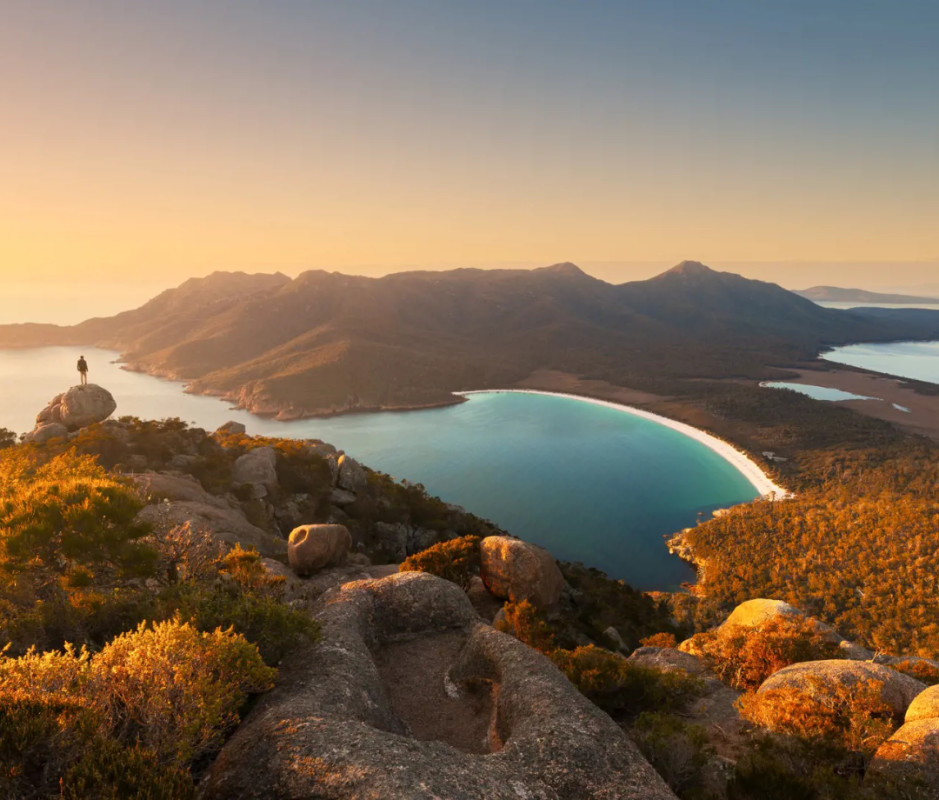
Matthew Donovan
An oft-overlooked island tucked at the bottom of Australia, Tasmania is a treasure trove of adventure awaiting discovery for those who make the surprisingly quick and affordable flight (think $250) from Melbourne or Sydney to its hub and state capital of Hobart. Tasmania packs a huge punch for its West Virginia size, featuring 19 national parks and one of the world’s largest UNESCO World Heritage Areas, the Tasmanian Wilderness. Best of all, you can cover much of it by car in a week or less.
Related: 4-Day Weekend in Tasmania, Australia
Cradle Mountain is host to many spectacular mountain hikes and the famous Overland Track, a six-day mission through the snow-capped alpine region with little more than wallabies and Tasmanian devils for company. Kayaking on the lake below it in hand-built Billy Pine kayaks is a less intense way to absorb the area’s serenity. Freycinet Peninsula is another must-visit, where red granite mountains collide with aquamarine ocean.
If mountain bikes are your preferred adventure mode, head to Derby—the hilly home to the World Enduro Series. The Blue Derby Pods ride offers a luxury, multi-day bike tour fueled by the best local Tasmanian produce. Afterwards, you can soothe sore muscles at Lake Derby’s floating wood-fired sauna on a freezing lake.
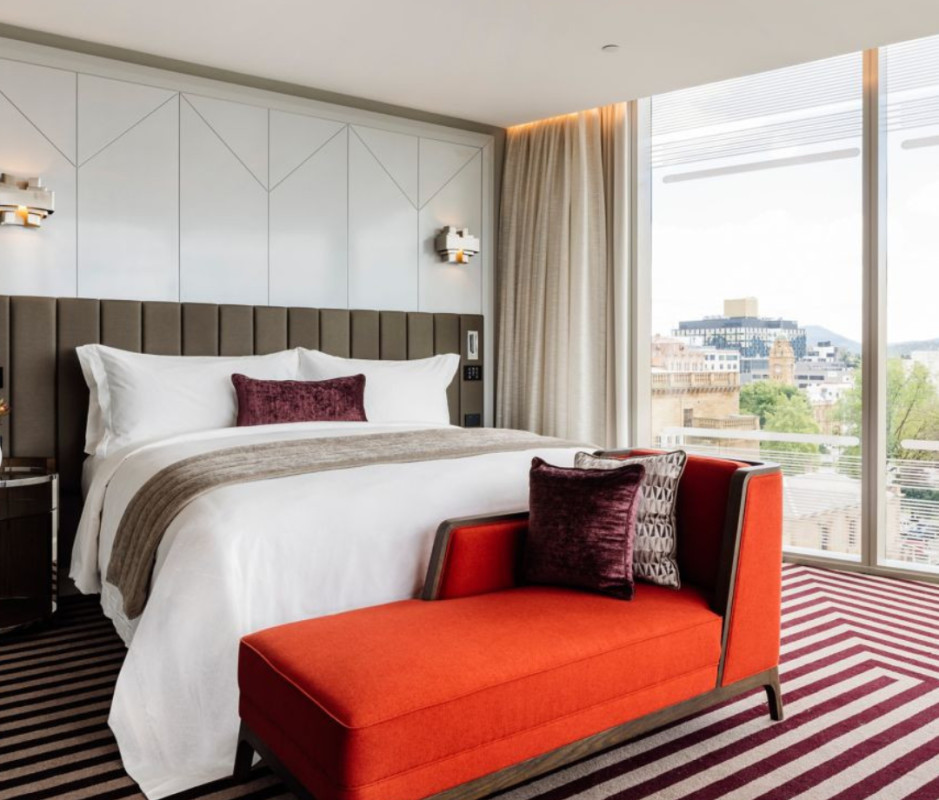
Courtesy of The Tasman
Where to Stay: The Tasman
Fly into the capital, Hobart, and stay at magnificent heritage-built hotel The Tasman. This is Marriott’s first Luxury Collection Hotel in Australia, inhabiting the multi-million-dollar refurbished building that was originally a hospital built in 1847. Rooms in the Heritage Wing embrace the former glory of the Commonwealth, with soaring ceilings, sandstone walls, huge hearth fireplaces and freestanding baths made of valuable Tasmanian Blackwood. Further afield, get away from it all in isolated luxury at Pumphouse Point in Cradle Mountain-Lake St Clair National Park.
Best for Sports Fanatics: Melbourne
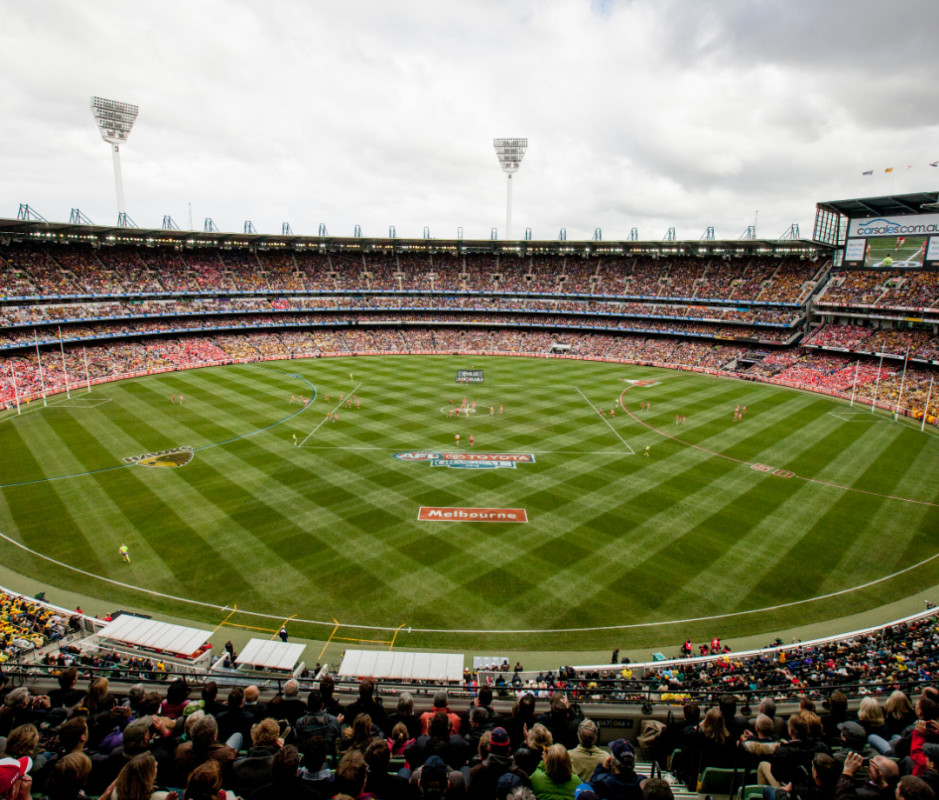
Courtesy image
Australia's second-largest city (after Sydney), Melbourne is known as the nation’s capital of sport. December and January bring Boxing Day Test cricket (December 26-29, 2024) and the Australian Open of Tennis (January 12-26, 2025). March heralds the Formula One Australian Grand Prix (March 13-16, 2025) and the autumn swells of April welcome the longest-running World Surf League event (April 15-25, 2025) at surf mecca Bells Beach. In 2028, Melbourne golf club Kingston Heath will host the prestigious President’s Cup, the biennial global team competition of the world’s best.
Of course, you'll need to immerse yourself in a true Aussie sport while in Melbourne. The biggest is the Australian Football League (AFL), which plays most games and has the biggest fan base in Melbourne. This is a fast-paced game in which players punt to each other across an oval-shaped field, also tackling, passing, and catching the ball in a non-stop frenzy to kick the ball through tall goal posts. Locals thrive on the intense live atmosphere, and tickets to regular-season matches—at under $50—are a fraction of the cost of an NFL game.
In November, the Melbourne Cup horse race is the Australian equivalent to the Kentucky Derby—dubbed "The Race That Stops a Nation.” It’s a multi-day carnival of champagne, finery, betting large, and justification for a statewide holiday in Victoria.
Where to Stay: Park Hyatt Melbourne
The Park Hyatt Melbourne sits in a leafy realm of the city within walking distance to the Melbourne Cricket Ground (also home to AFL matches), as well as the city's tennis center and soccer field (AAMI Park). It’s an urban oasis evoking old-school luxury with grand timber and marble-clad rooms, vaulted ceilings and art deco features. The facilities remind you of Melbourne’s status as the sporting capital of the country, with a well-appointed gym, marble-surrounded indoor pool and day spa, plus steam rooms and saunas.
Best for Foodies: South Australia
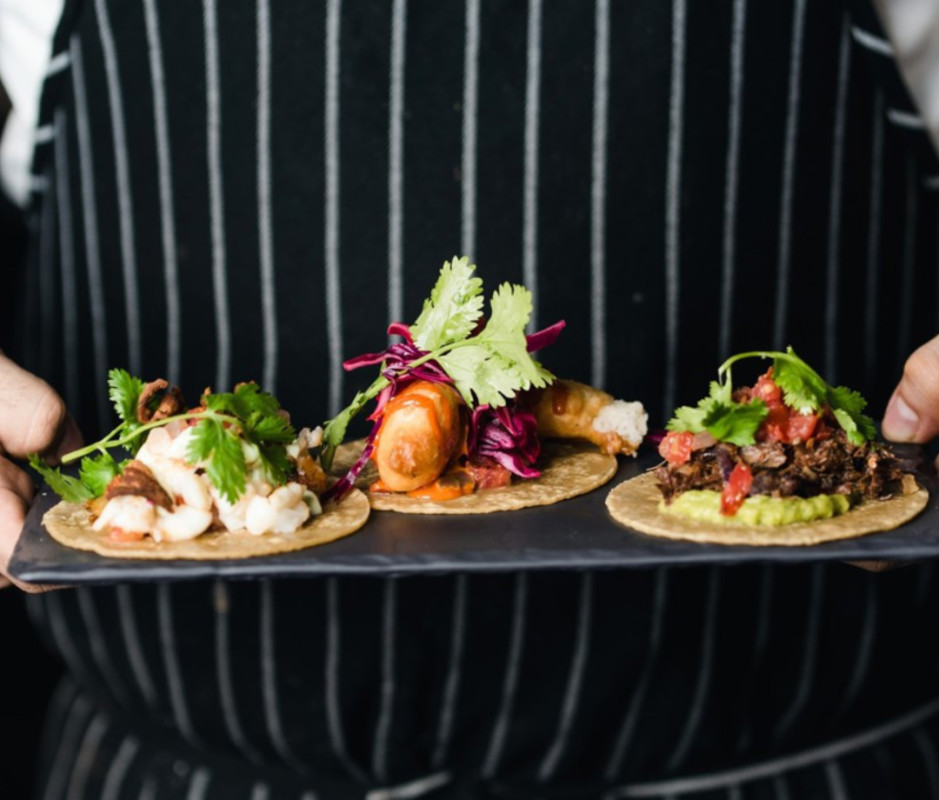
Courtesy of Tasting Australia
South Australia flies under the radar for international visitors, but locally it has a reputation for producing the nation’s best seafood, meat, greens, and dairy products. If you’re going to try eating kangaroo or Australian crocodile with saltbush, here's the best place to do it.
The gastronomic scene centers around state capital Adelaide. The Barossa Valley, McLaren Vale, and Clare Valley will be familiar regions to wine lovers, and all are less than a 90-minute drive from the city through undulating green countryside. Hentley Farm pairs world-class, award-winning wines with exquisite dining, and is one of just three restaurants in Australia carrying the prestigious Relais and Châteaux restaurant brand. Restaurant Botanic was most recently named best in Australia by renowned food magazine, Gourmet Traveller. And while there’s no shortage of high-end options, often the more laidback restaurants that focus on quality and seasonal ingredients—like the Salopian Inn at McLaren Vale—can be highlights of a trip there.
Foodies may want to time their visit with the Tasting Australia festival. Held in the region in May, the area's biggest annual culinary happening draws top toques from near and far. This year, they include San Diego-based celebrity chef Claudette Zepeda, known for her bold approach to regional Mexican cuisine, and Australia's MasterChef Matt Moran.
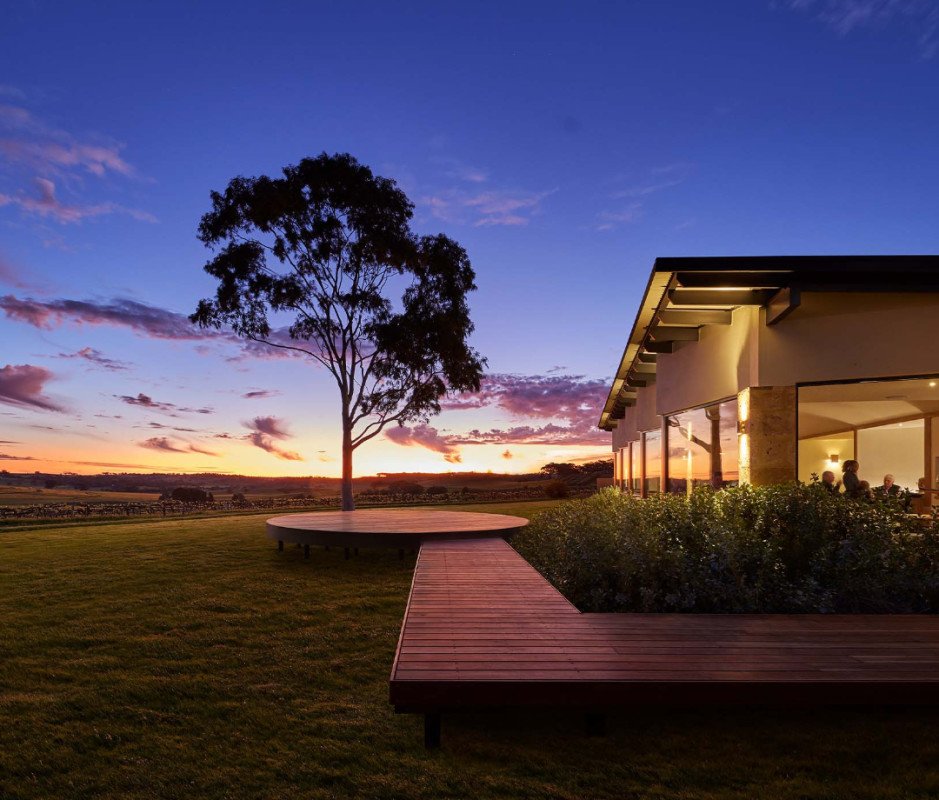
Courtesy of The Louise
Where to Stay: Sequoia Lodge
The $13 million Sequoia Lodge is an adults-only escape on the edge of a national park and just 20 minutes from Adelaide CBD. This is as boutique as it gets, with just 14-suites ensconced in nature and perched atop Adelaide's Mount Lofty, with natural hot springs running through the property. Farther out, escape to a luxe villa among the kangaroos and dine at the famous in-house restaurant of The Louise in the Barossa Valley.
Best for Wildlife Watchers: Kakadu National Park
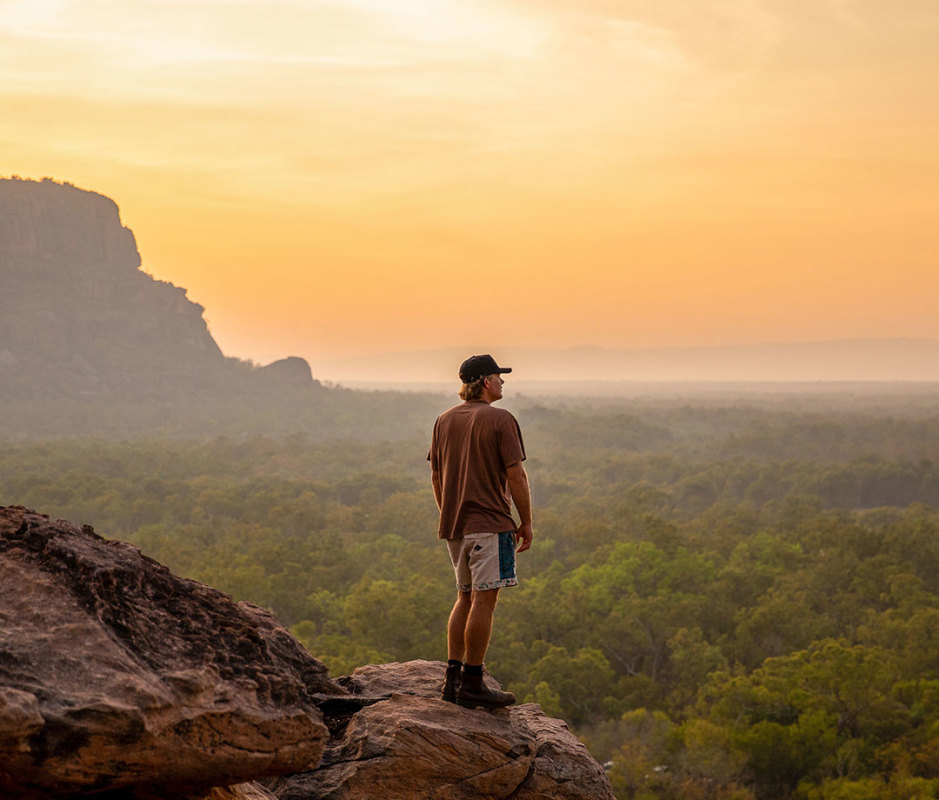
Tourism Northern Territory
Kakadu is a UNESCO World Heritage-listed area and the second-largest national park in the world. Renting a 4x4 in Darwin is the best way to explore its mangrove-flanked coastlines, vast floodplains, dramatic waterfalls, and savannah grasslands, all teeming with incredible biodiversity. The area contains about one third of all of Australia’s bird species and one-fifth of all Australian mammals.
Many of these species are adorable Aussie icons: bandicoots, quolls, kookaburras, flying foxes, kangaroos, and wallabies. Somewhat less cute are the saltwater crocs lurking in the park's vast waterways, deadly king brown snakes, northern death adders, and let's not start listing the various venomous spiders—as none of this is meant to dissuade you from visiting one of the most remarkable outbacks on Earth. Superb wildlife-focused outfitters will keep you at a safe distance, including a luxury off-grid glamping stay at Bamurru Plains that offers front-seat viewing akin to an African safari. Yellow Water Cruises floats you between the cacophony of birds and beasts, and also offers a chance to snag a barramundi in the area's world-famous fishing zone.
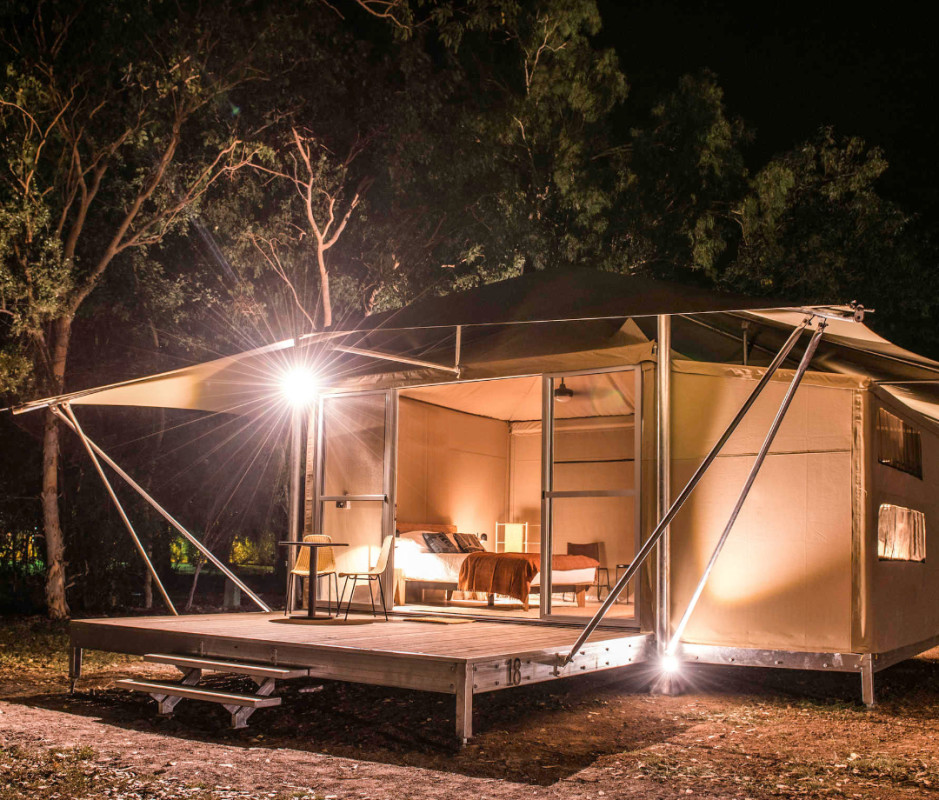
Courtesy Image
Where to Stay: Cooinda Lodge
Cooinda Lodge is at the centre of the action on Yellow Water Billabong and is the only accommodation other than campsites in the middle of the park. The air-conditioned glamping tents and private luxury villas are the pick of accommodation options, with handcrafted Australian furniture, local Indigenous artworks, and a deck to immerse in the natural ambience. It’s perfectly located for an early-morning barramundi fishing tour, which leaves at sunrise from Yellow Water Billabong—just a short stroll from the lodge.
Best for Thrill Seekers: Thredbo
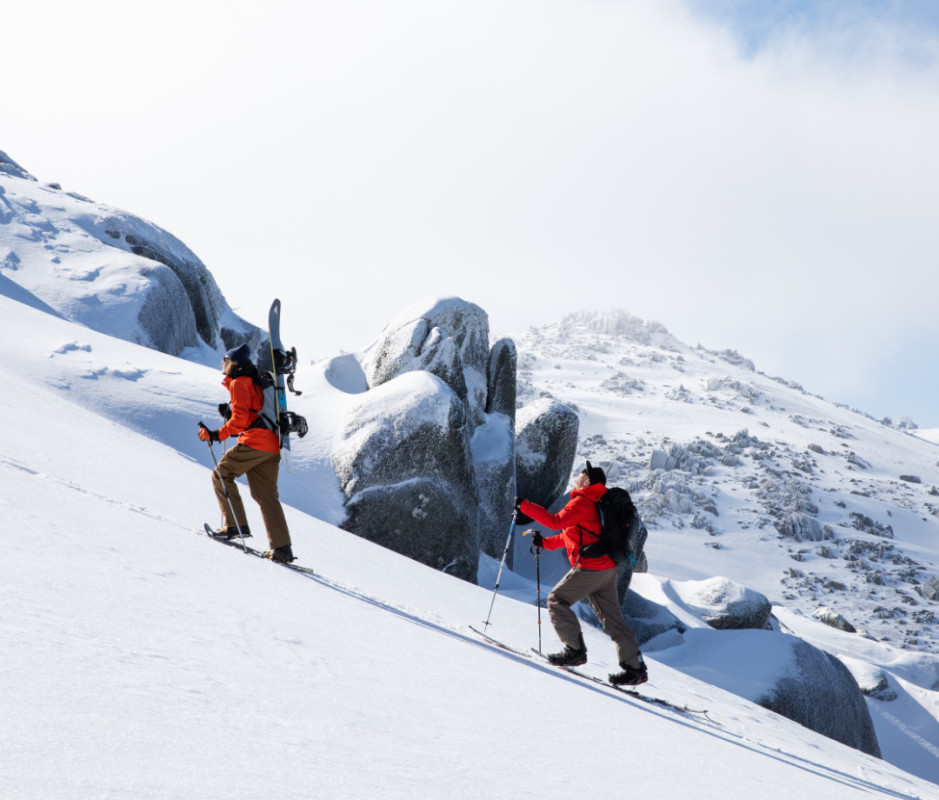
Justine Fisher
It may come as a surprise to learn Australia has some of the Southern Hemisphere’s best ski slopes, where powder hounds can feed their addiction between the gum trees during the heart of antipodean winter in July and August. The charming mountain resort of Thredbo in the Snowy Mountains has been voted number one in Australia for six years running at the World Ski Awards. It boasts the longest runs and biggest vertical drop of any in the country. Best of all, it’s an Ikon Pass resort, so many U.S. skiers have already paid for their lift ticket.
Related: 10 Best Mountains and Ski Resorts in Australia and New Zealand
Thredbo is a base camp to Australia’s highest peak, Mt. Kosciuszko, as well as the highest lifted point in the country—marked by an enormous clanging bell at the top of Karel’s T-Bar. Ringing it is a rite of passage for skiers and boarders—as well as summer hikers launching off to conquer the peak. In winter 2024, the resort will open a thrilling new all-weather Alpine Coaster. In summer, Thredbo transforms into Australia’s only lift-accessed mountain bike park with 25 miles of downhill trails.
Thredbo is also earning a reputation for its bougie après scene emulating that of Aspen or Deer Valley—with long lunches and champagne breakfasts throughout ski season.
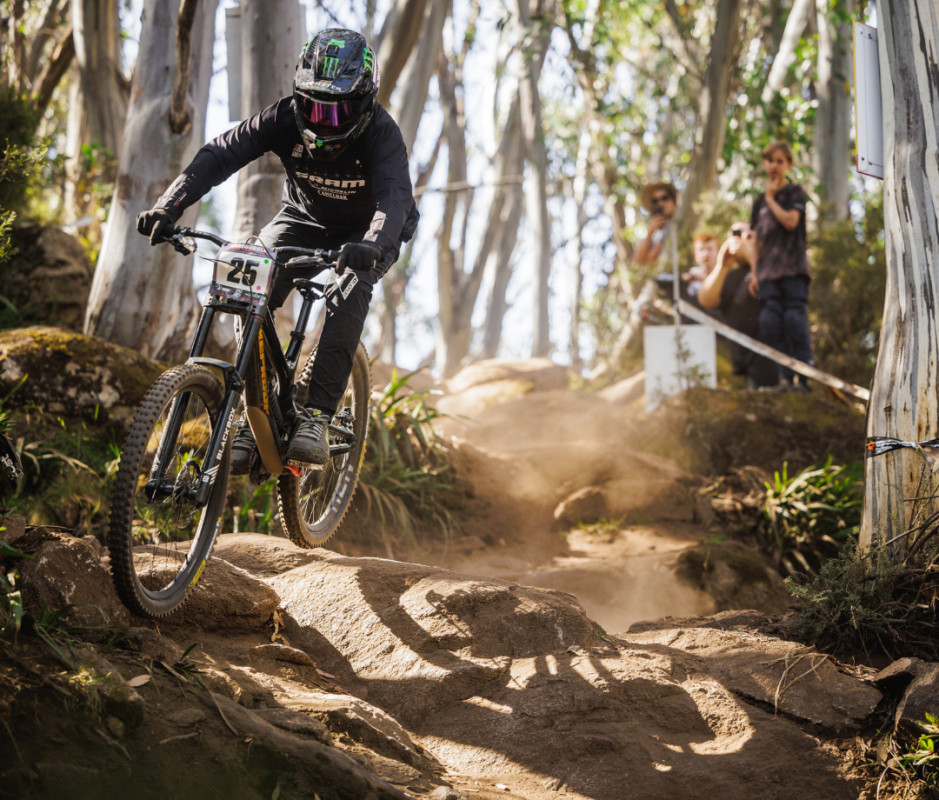
Justine Fisher
Where to Stay: Thredbo Alpine Hotel
Thredbo Alpine Hotel oozes alpine charm with wood paneled walls and vaguely retro décor you’d expect from a chalet in the European Alps. It boasts an après scene to match, just footsteps from the chairlifts. When you’ve had a few too many cocktails by the fire at the Lounge Bar downstairs, your cozy bed is just a few floors away.
Best for History Buffs: Uluru
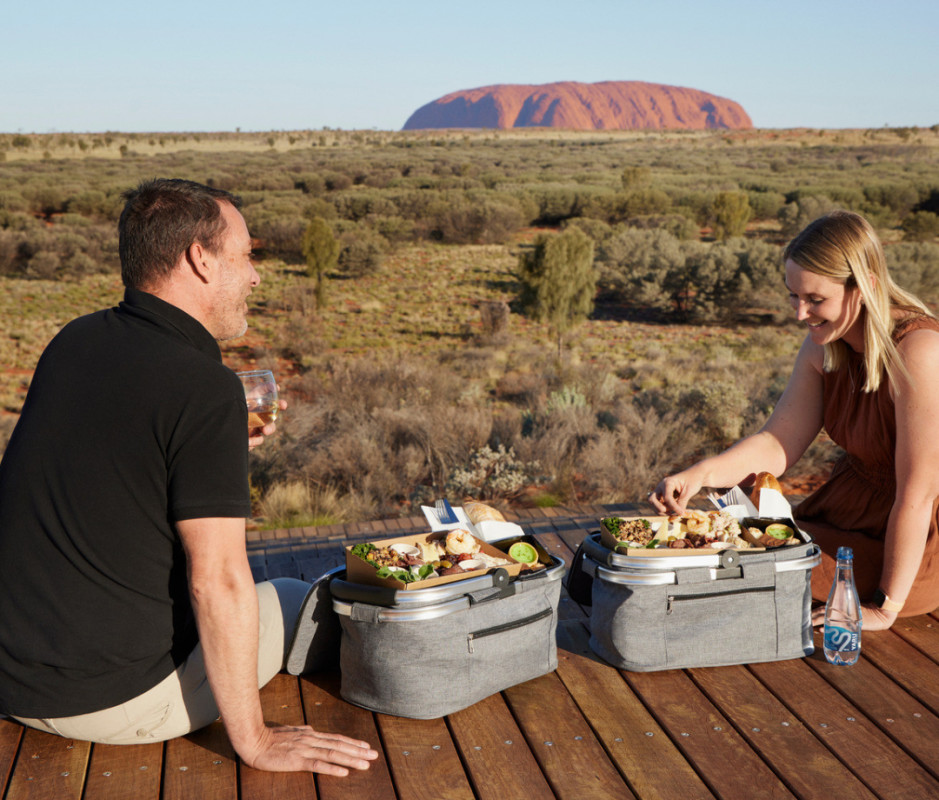
Tourism Northern Territory
While the British claimed to have “discovered” the east coast of Australia in 1770, Indigenous Australians had lived there for more than 65,000 years. They are thought to be the world’s oldest continuously surviving culture. The best place to learn about this fascinating history is in the red center of Australia, at the iconic sandstone rock formations of Uluru and Kata Tjuta.
Uluru (formerly known as Ayers Rock to non-Aboriginal settlers) is the enormous red rock in the centre of the desert, in many ways physically and spiritually the heart of Australia. The local Indigenous people, Anangu, host tours out of Ayers Rock Resort, telling the ancient stories of their ancestors and showcasing Indigenous rock art, “bush tucker,” and more.
Visitors can indulge in special dining experiences under the outback sky and tranquil sunrise hikes around the base of the rock (its circumference is about 6 miles). The newest cultural experience here launched in 2023 is called Wintjiri Wiru (translation: “beautiful view out to the horizon”), illustrating the Indigenous story using state-of-the-art choreographed drone, laser, and light projections under the starry nights.
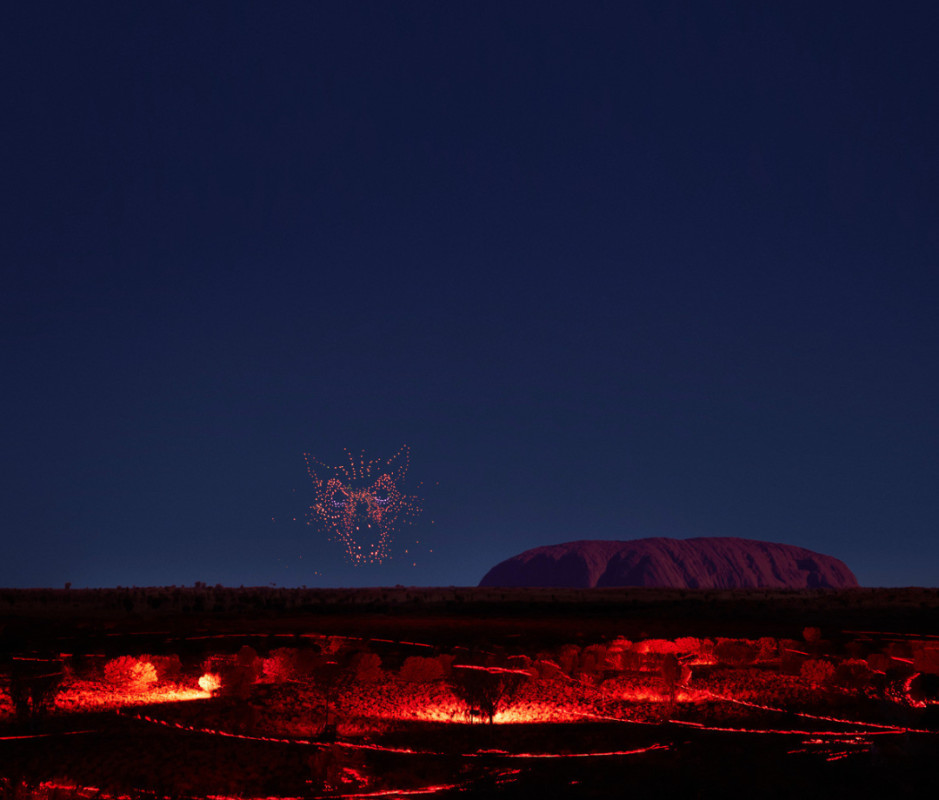
Voyages Indigenous Tourism Australia/Getty Images
Where to Stay: Sails in the Desert
Sails in the Desert is a five-star desert oasis just half an hour from the rock, with spacious rooms and decks overlooking a grassy courtyard and pool. Designed by award-winning architect Philip Cox to pay homage to the iconic Australian landscape, it has stood for 40 years but undergoes regular facelifts and still wins travel awards for its supreme luxury and location. The restaurant, Ilkari, serves the nation’s best Indigenous-inspired cuisine. The other ultimate desert experience is to stay in one of 15 luxury glamping tents at Longitude 131˚. The “tents” come with en suites and rainshowers, plus unparalleled views of Uluru.
Best for Wine Lovers: Margaret River
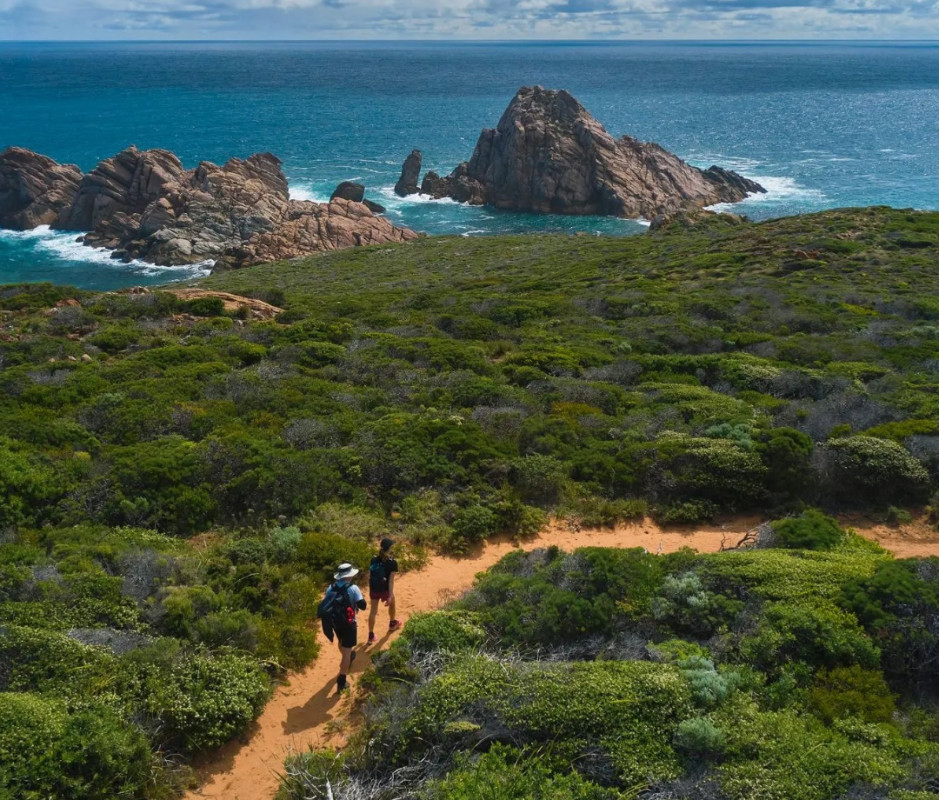
Courtesy Image
The geography, soils, and Mediterranean climate of Western Australia’s Margaret River region make for ideal grape-growing conditions comparable to Bordeaux in France. But unlike France, there’s a laidback, surf culture in the quaint villages and vineyards speckled alongside spectacular, empty beaches. A drive along Caves Road offers plenty of spots to stop and sip at cellar doors, then swim or surf at the stunning beaches. There are also hosted tours if you prefer not to get behind the wheel (the legal blood alcohol concentration limit in Australia is 0.05 per cent).
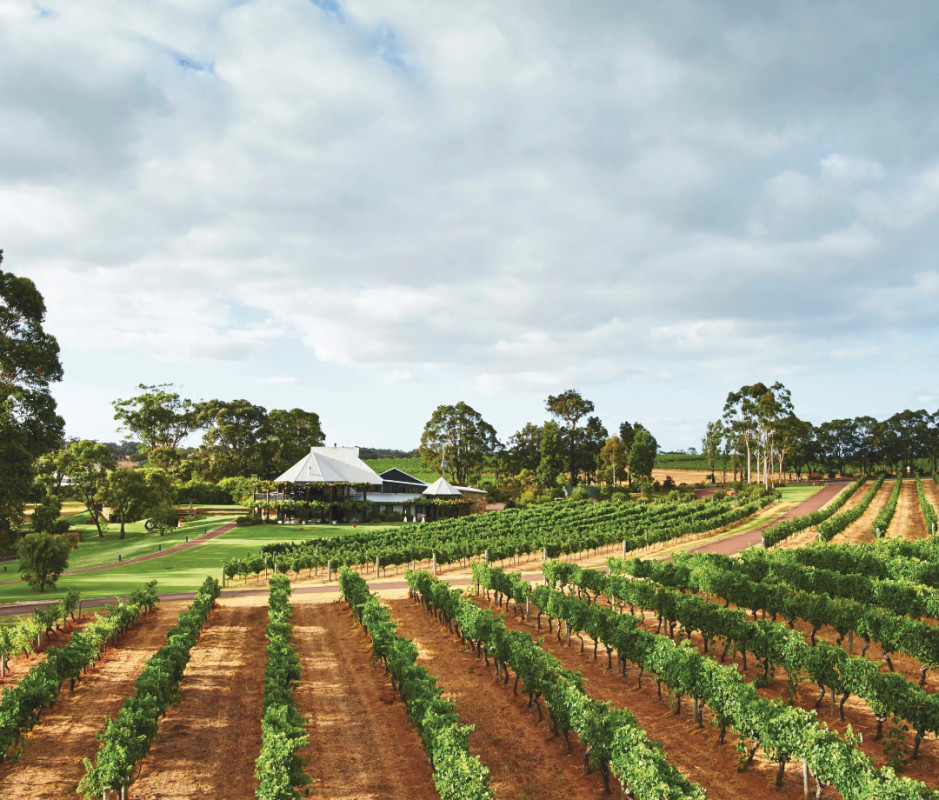
Courtesy Image
Vasse Felix is the oldest winery of the region. Howard Park specializes in sparkling and white wines, and even makes wine for pop star Kylie Minogue. Glenarty Road makes “ocean-cellared wine” by lowering the wine into the nearby ocean for 13 months. If you prefer something hoppy, Wild Hop Brewing Company in Yallingup pours local brews in a languid riverside setting.
Where to Stay: Smiths Beach Resort
Smiths Beach Resort is a boutique luxury hotel situated on a stunning mile of sand between the vineyards. It’s tucked away in the Aussie bush of Leeuwin-Naturaliste National Park, with front-row seats to ruby-red sunsets melting into the Indian Ocean. Surfers couldn’t be happier with the location, facing one of Australia’s most famous surf breaks, known as Supertubes, Western Australia.
Best for Water Sports: Whitsunday Islands
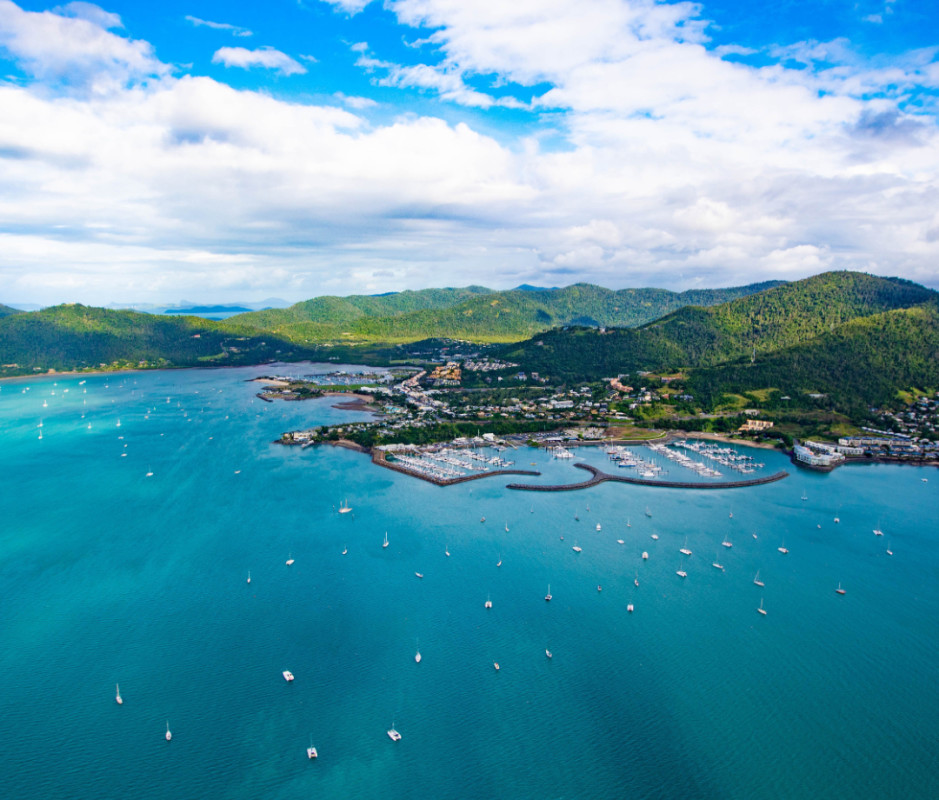
Courtesy image
From sailing catamarans to motorized jet skis, windsurfing, kayaking, diving, and snorkeling on the Great Barrier Reef, the Whitsunday Islands are easily Australia’s premier spot for water sports. You’ll find these palm-covered tropical islands off the coast of Queensland, on the northeast coast, in weather and water that stays warm (around 80 degrees for both) year-round.
The Great Barrier Reef—the largest coral reef system on the planet—is a marine wonderland teeming with fish, technicolor coral, and dolphin, sea turtle, and whale sightings in crystal-clear waters. For a multi-day closeup, charter a luxury yacht that comes fully crewed with an experienced skipper to handle all the navigating and cooking while you do the swimming, snorkeling, sunbathing, and offshore dining on fresh seafood. The most popular isles in the Whitsundays are Hamilton Island, Daydream Island, Hook Island, and Whitsunday Island—all of them furnished with resorts offering a plethora of water sports.
Where to Stay: Qualia
Qualia on Hamilton Island is an adults-only hideaway with luxury villas and private plunge pools. These villas are more like miniature Malibu mansions with paneled wood decks overlooking the turquoise ocean, hemmed in by eucalyptus trees for total privacy. Staying here, you’ll receive a complimentary golf buggy to get around the island, where no one drives cars.
Best for Wellness: Byron Bay
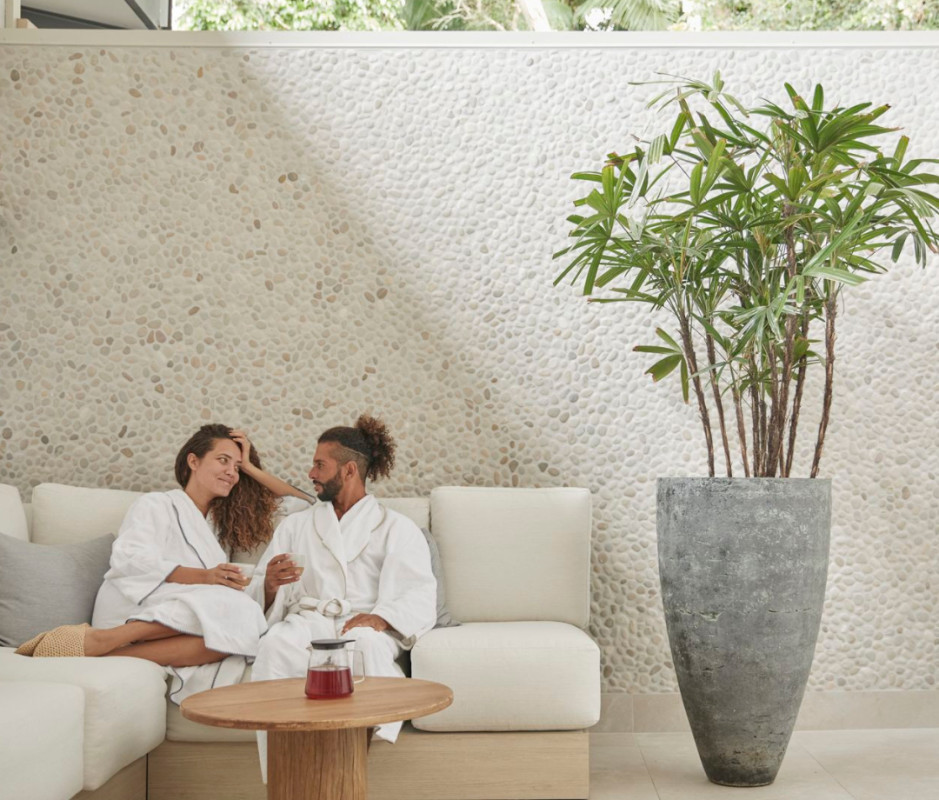
Courtesy Image
We could easily list Byron Bay as the best place for surfers—enjoying world-famous point breaks like The Pass. More recently, its plant-based restaurants, spa retreats, fitness camps, and yoga or meditation schools are grabbing attention to match the locals’ outdoorsy, slightly hippie, beach culture.
Greet sunrise with yoga over the Byron hinterland at Gaia Retreat and Spa, co-founded by Australian singer and actress Olivia Newton-John, while nourishing your body with greens from the resort garden. Crystalbrook Byron leans into the Japanese tradition of shinrin yoku or “forest bathing” in a nearby rainforest. If your new year’s resolution is to get ripped, hit the pads at Counterpunch boxing gym or The Academy mixed martial arts gym. Then refuel at B Smoothie Bar or The Farm—an 80-acre operational farm where you can picnic on the region’s freshest produce while greeting its cows, pigs, and chickens.
Where to Stay: Elements of Byron
Elements of Byron offers wellness in privacy, surrounded by bush yet in the heart of the action and on the sand of local favorite Belongil Beach. Two pools, including one for adults only, plus daily yoga, meditation walks, and horseback riding on the sand. Its Osprey Spa is the most-awarded day spa in the area.
Best All-Rounder: Sydney
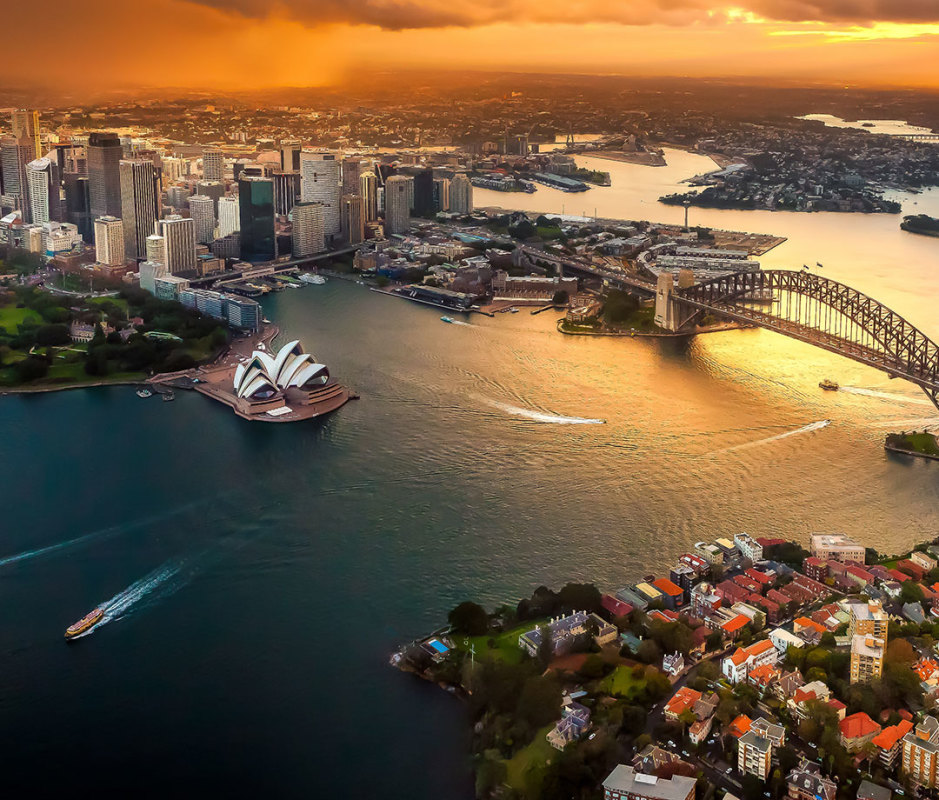
Vijay Anand/Getty Images
Boasting an iconic harbour, lush Botanic Gardens, world-famous beaches, myriad bars and restaurants, and the best weather in the country, Sydney is the nation’s biggest and most exciting city, championing the best of Australia’s beachside lifestyle with all the events, visitor attractions, and buzz you can expect from a world-class town.
Climbing the bridge is an exciting way to view Sydney Harbour from above. Ride the iconic Manly ferry across the water to the beach that trained seven-time World Surfing Champion Layne Beachley, or hit the Bondi Icebergs ocean pool for some Instagram-worthy laps and a cocktail afterwards. Sports fans can also get their fix at the various rugby, AFL, cricket, soccer, sailing, and horse racing events hosted in the city.
Australia’s proximity to Asia means the best food is often Thai, Malaysian, Japanese, Indonesian, or a mix of the above. The zesty flavors and cocktails at Chin Chin are next level, while Opera Bar has the most iconic waterfront views. Coffee culture and brunch are also massive in this outdoorsy city. Try the buzzing cafes of the eastern beach suburbs of Clovelly, Bronte, and Coogee for a post-surf morning fuel.
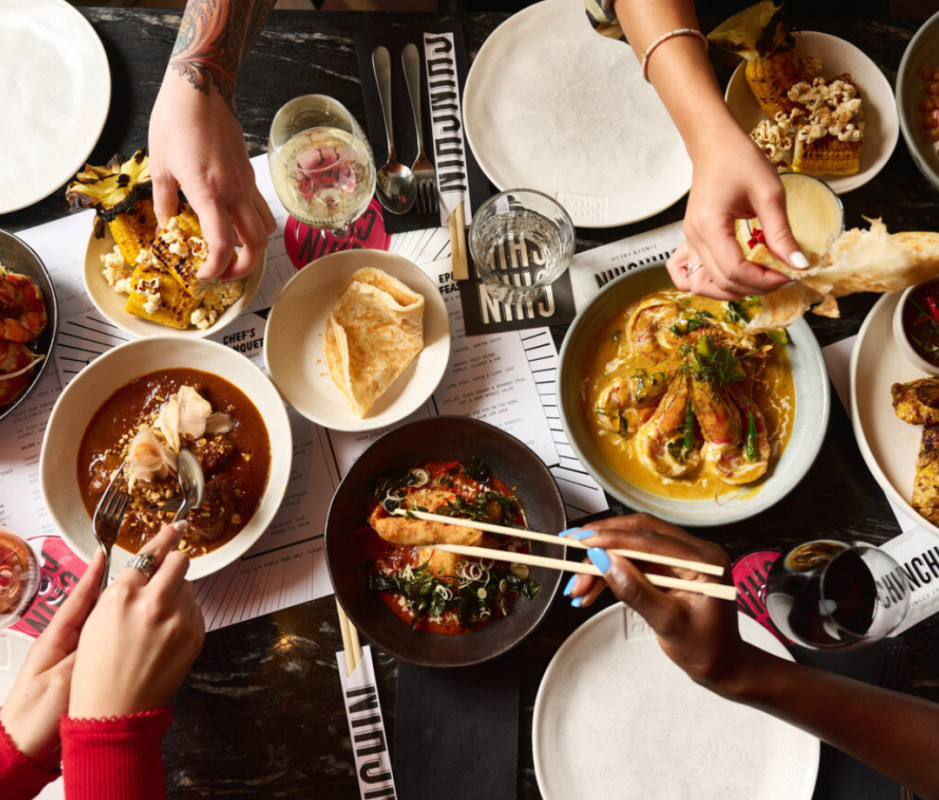
Steven Woodburn
Where to Stay: W Sydney
Overlooking the harbor, the recently-opened, 585-room W Sydney is waterfront icon with a buzzy rooftop pool and an unbeatable location for walking or grabbing public transport to many of the city's top attractions. For a less conspicuous stay, try Pier One, tucked under the first pylons of the Harbour Bridge. Its freestanding eggshell tubs looking out of floor-to-ceiling bridge and water views are iconic.
When to Visit Australia
Southern Australia enjoys a sunny and mild climate year-round, with Sydney experiencing similar weather to Los Angeles, while the climate up north is tropical. Southern Hemisphere summers (December to February) can be busier for tourists and very humid. September brings the best spring sunshine and dry days without being too hot in the east coast cities of Sydney, Brisbane, and Melbourne. Meanwhile, opt for cooler months (June to September) if you want to snorkel on the Great Barrier Reef without the risk of being stung by box jellyfish.
Flights to Australia
If you live in Los Angeles, San Francisco, or Vancouver, the journey to Australia is straightforward. These western cities offer nonstop flights to Sydney or Melbourne starting from $1,000. The flight across the Pacific is a mammoth 15 hours, but often preferable to lengthy stopovers. Hawaiian Airlines flights stop halfway in Honolulu, and can make for a nice holiday if you want to surf and hang out a few days en route.
Keep in mind that Australia is a big country. The distance from Sydney to Perth (a couple thousand miles) is about the same as Las Vegas to New York. Getting around to the best bits of a place this massive will often require further internal flights, which are fortunately fairly inexpensive, especially when factoring in a stronger U.S. dollar. Book well in advance (six months is preferable) for the cheapest deals.
Why You Should Trust Me
I’m a local born and bred Aussie, who is currently living in Sydney but has travelled across most of this vast country. It started when my parents took me out of school for six months when I was 10 years old to circumnavigate Australia's endless coastlines in a 4WD and tents. I’ve also been a journalist and travel writer for about a decade, covering all corners of the nation and globe in my work.
To build this list, I drew on my experiences, but have also interviewed experts in each region. Among them: winemaker Nic Bowen of Margaret River’s Howard Park, internationally renowned Tasmanian chef Massimo Mele, Thredbo ambassador and snowboarding Olympian Valentino Guseli, the local Bininj people, and tour guides of Kakadu.
from Men's Journal https://ift.tt/FSfTZXU
No comments:
Post a Comment